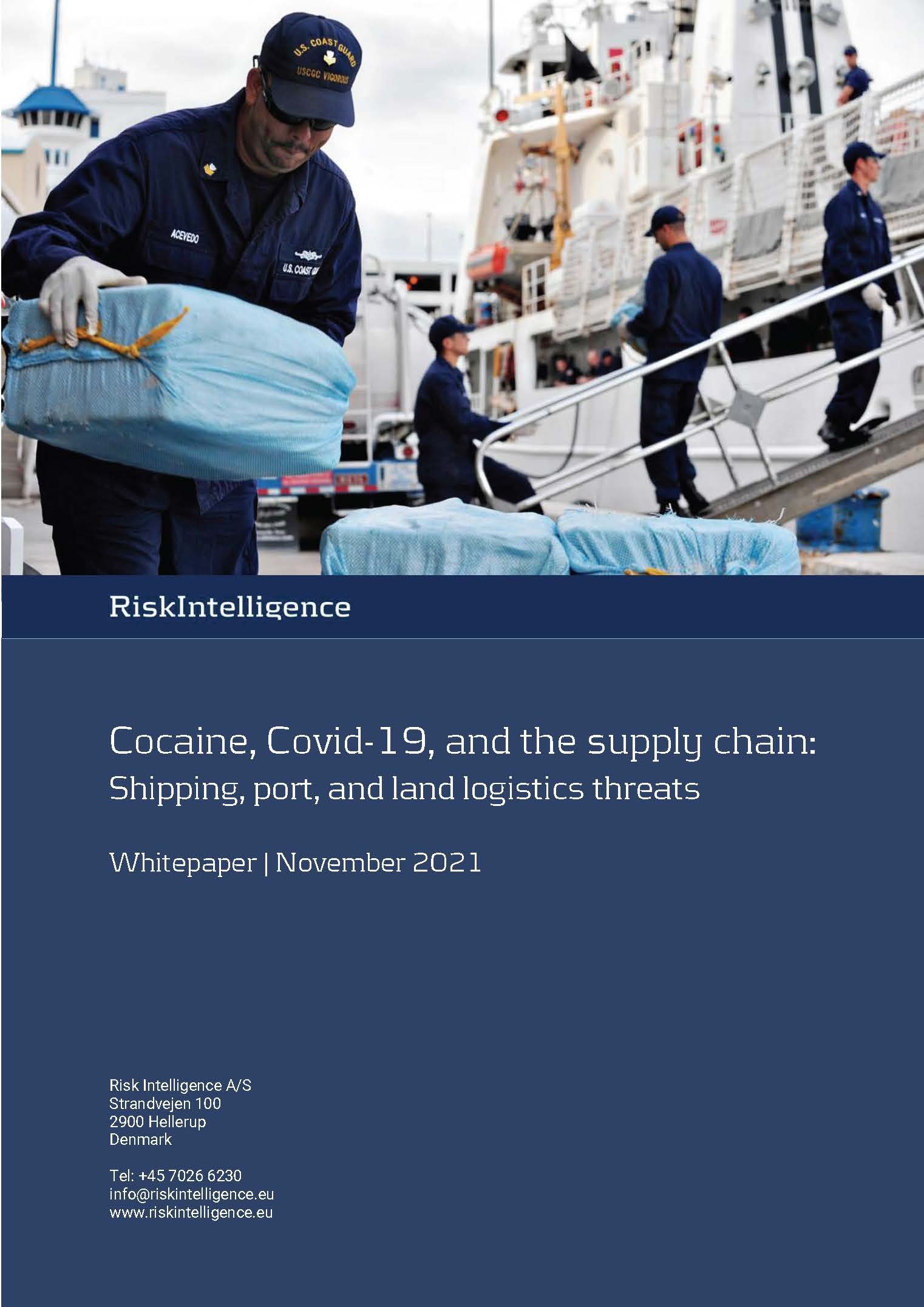Cocaine, Covid-19, and the supply chain: Shipping, port and logistics threats
In 2020, cocaine was the second most used illegal substance in Europe with more than 4.5 million people using the drug at least once, despite most countries enforcing lockdowns and shutting nightlife venues down as part of their Covid-19 prevention programmes. While around 125 tonnes of cocaine were seized by authorities on the continent, some sources estimate this figure to represent only 10% of total imports, meaning a total of 1250 tonnes of the drug was introduced into the European market through 2020.
These numbers highlight the continuing issue of cocaine smuggling into and trafficking across Europe, with maritime and land-based shipping and logistics operations at risk of being impacted along critical overlaps between the legitimate and illegal supply chains.
This whitepaper provides an overview of cocaine smuggling into Europe and the implications for the end-to-end supply chain by firstly focusing on the networks that link supplier locations in South America with European markets, as well as the routes that are used. Impacted ports are then discussed, with an outline of the modus operandi of the smugglers. Two case studies are presented: Le Havre and Hamburg. Finally, the paper looks at the impact of Covid-19 and how smuggling might evolve in the future.

